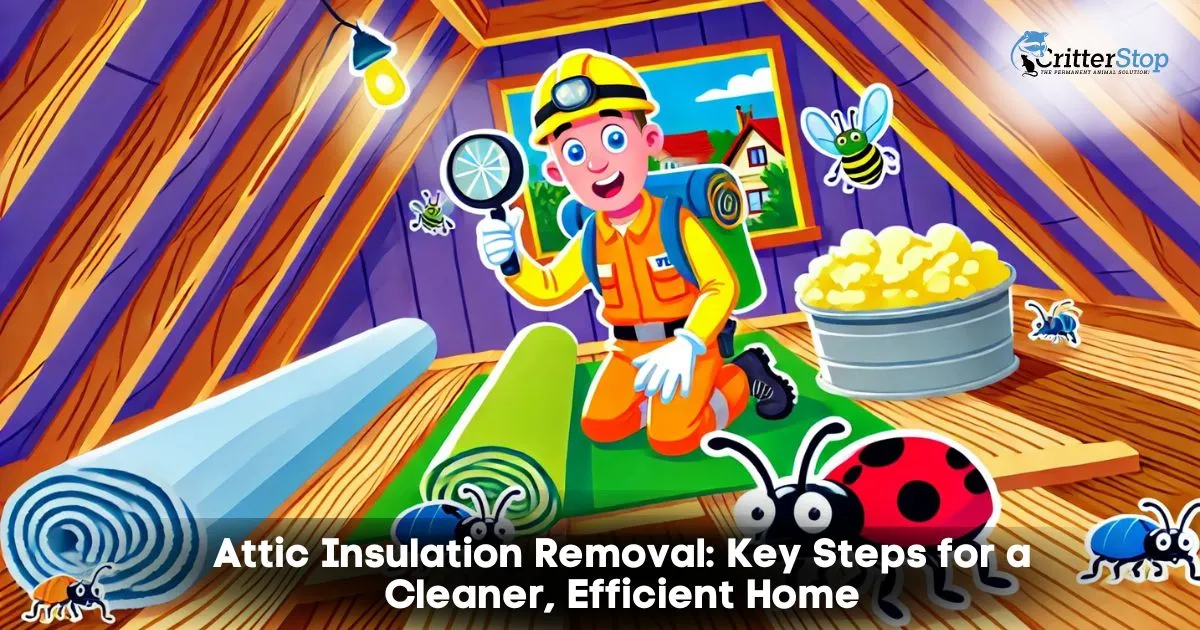
Many homeowners often overlook the importance of attic insulation removal until they face issues like mold growth or pest infestations. Removing old or damaged insulation improves home energy efficiency and enhances indoor air quality. Ignoring this task can lead to increased energy bills and health concerns.
Homeowners may wonder about the best approach to attic insulation removal. The process typically requires professional help to ensure safety and effectiveness, especially if hazardous materials like asbestos are present. Understanding the need for removal and its benefits can motivate homeowners to take this crucial step for their property.
Removing attic insulation can bring significant benefits, including improved comfort and energy savings. Proper insulation removal can also prevent costly repairs due to outdated materials. This task can revitalize living spaces and protect the home's structure with the right approach.
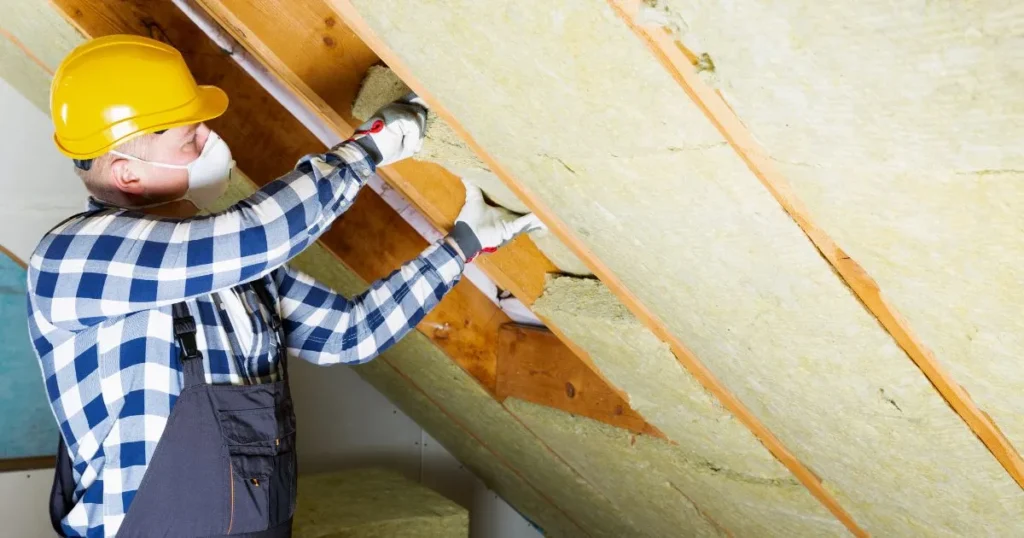
Attic insulation removal involves several important considerations that homeowners should be aware of. It includes recognizing different insulation material types and identifying signs indicating insulation needs removal.
Several types of attic insulation are commonly found in homes, including fiberglass, cellulose, and spray foam.
Understanding the characteristics of these insulation types helps in the removal process.
Several indicators suggest that attic insulation should be removed.
Recognizing these signs is essential for maintaining optimal attic performance and energy efficiency.
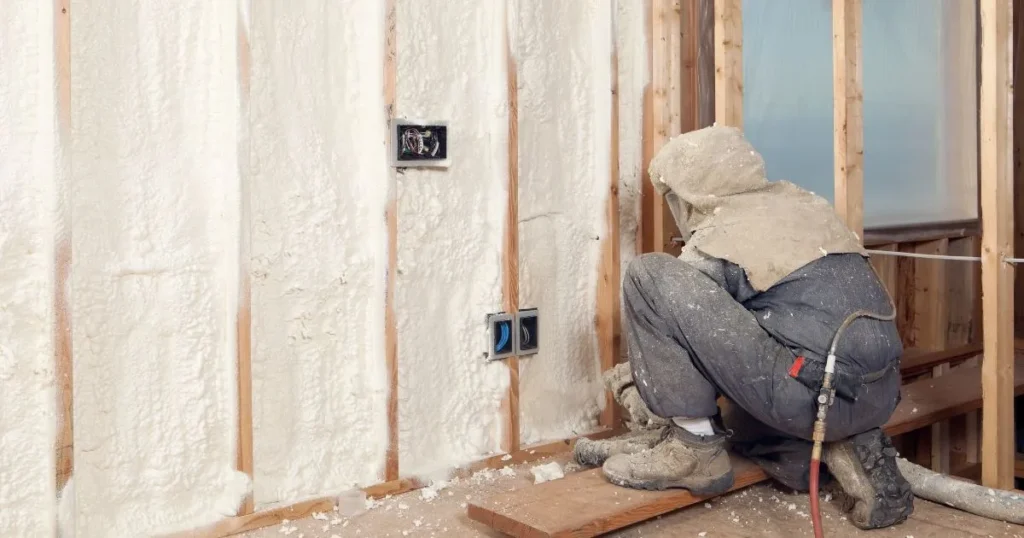
Removing attic insulation requires careful planning and execution. This process involves preparation steps, specific techniques for insulation removal, and important safety considerations.
It is essential to prepare adequately before beginning the insulation removal. Start by assessing the type of insulation present in the attic. This may include fiberglass, cellulose, or spray foam. Each type requires distinct removal approaches.
Next, ensure the attic is accessible and organized. Clear any obstacles that might impede the removal process. Gather necessary tools such as respirators, protective gloves, goggles, and an attic insulation removal vacuum. This vacuum is especially useful for effective removal minimizing debris spread.
Lastly, check the attic for signs of moisture or mold. Addressing these issues beforehand can prevent complications during the insulation removal process.
Insulation removal can be accomplished using several techniques. The most efficient method is employing an attic insulation removal vacuum. This tool suctions out loose insulation material quickly, significantly reducing the time and effort required compared to manual methods.
Cutting rigid insulation boards into smaller sections can facilitate easier handling and removal. Use a utility knife for precision. Always work in sections, starting from the edge and moving inward to maintain order.
If removing older cellulose insulation, it is best to moisten the material first. Wetting the insulation can minimize dust and make it easier to handle. Whichever technique is chosen, a systematic approach will enhance efficiency.
Safety is paramount during the insulation removal process. Workers should wear appropriate personal protective equipment (PPE), gloves, goggles, and respirators. These items protect against harmful dust and irritants.
Ensure that the attic is well-ventilated. Proper airflow reduces the risk of inhaling toxic particles. It is also wise to monitor for signs of pests, as insulation removal can disturb wildlife.
Lastly, consider hiring professionals if the task feels overwhelming. An experienced team can navigate potential hazards and ensure the safe removal of insulation, which can also help avoid damage to the attic structure.
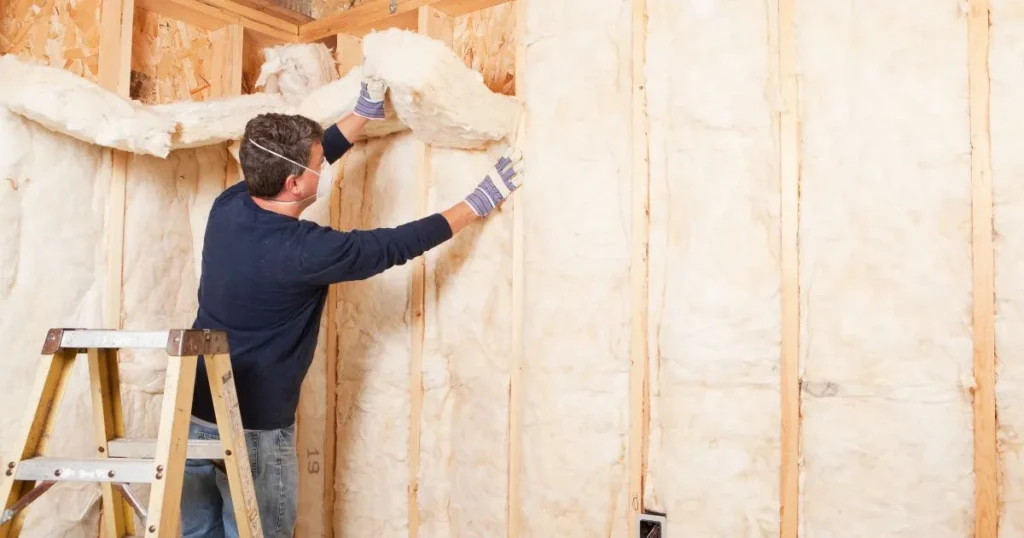
Attic insulation removal can be approached differently, with benefits and challenges. Evaluating the job scope, the individual's experience and the safety considerations will help determine the best method.
DIY attic insulation removal may be viable for those with experience in home improvement projects. If the space is small and the insulation is loose-fill, a homeowner with the right tools can manage the task effectively.
Before starting, it is essential to assess potential hazards. Health risks such as mold and dust can have significant repercussions. Proper safety gear, including masks and gloves, is crucial.
Additionally, DIY can save costs. Homeowners who handle insulation removal personally avoid labor expenses tied to attic insulation removal services. However, they should be prepared for possible challenges, such as unforeseen problems with wiring or mold.
Hiring professional services can provide peace of mind when dealing with more extensive removal tasks. Experts in attic insulation removal often possess the equipment and knowledge necessary for safe and efficient work.
Professionals can identify and mitigate health hazards like asbestos or significant mold growth, which the average homeowner may not easily recognize. They can ensure that the job meets local building codes and follows the best practices.
Moreover, using an attic insulation removal service can eliminate the physical burden of the task. Homeowners seeking help can easily find attic insulation removal near me to explore local options. This choice often leads to a quicker resolution and minimizes the home's damage risk.
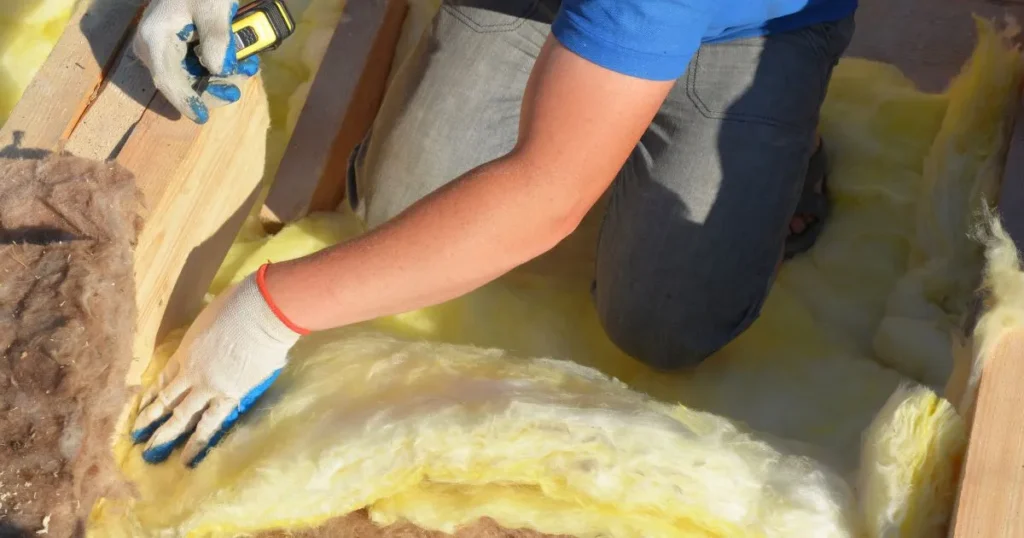
Understanding the associated costs and influencing factors is crucial for effective budgeting when considering attic insulation removal. Prices can vary widely based on multiple elements, including the extent of removal and replacement needs.
Attic insulation removal costs typically range from $1 to $3 per square foot. Therefore, homeowners should expect to pay between $500 and $2,000 for comprehensive removal. The specific cost often depends on the type and amount of insulation in place. For instance, removing fiberglass may differ in price from removing cellulose or spray foam insulation.
Homeowners should also factor in potential disposal fees. Contractors may charge for hauling away materials, so it's wise to include this in budget estimates. Additionally, if replacement is part of the project, combining removal and new insulation can sometimes lead to cost savings over separate installations.
Several elements impact the overall cost of attic insulation removal. The home's location significantly influences pricing, as the cost of attic insulation removal near me can vary from region to region. Urban areas may have higher labor costs than rural settings.
The extent of damage or contamination in existing insulation also plays a role. Moldy or pest-infested insulation often requires more labor and careful handling, increasing costs. Lastly, accessibility to the attic affects safety and labor time, potentially raising overall expenses.
Considering these factors allows homeowners to prepare adequately for the financial aspects of insulation removal and replacement.

Replacing or upgrading attic insulation can significantly improve energy efficiency and comfort in a home. Properly selecting and installing new insulation ensures optimal performance for years to come.
When selecting new insulation, homeowners must consider several factors, including R-value, material type, and environmental impact. Common insulation materials include fiberglass, cellulose, and spray foam. Each has unique properties:
Homeowners should also consider local climate conditions. Areas with extreme temperatures may benefit from higher R-values. Consulting local insulation experts can yield tailored recommendations for insulation options available in the area, such as "attic insulation removal and replacement near me."
The attic insulation removal and replacement process begins with assessing the current insulation condition. If the existing insulation is damaged or ineffective, it must be removed. This may involve:
Once the attic is clear, install the new insulation according to manufacturer guidelines. This may include laying batts, blowing in loose-fill insulation, or applying spray foam. Proper installation ensures thermal efficiency and air control.
Upgrading attic insulation offers several advantages. Improved insulation reduces energy costs by minimizing heat loss in winter and heat gain in summer. Key benefits include:
Investing in attic insulation removal and replacement upgrades home performance and promotes long-term savings and comfort.
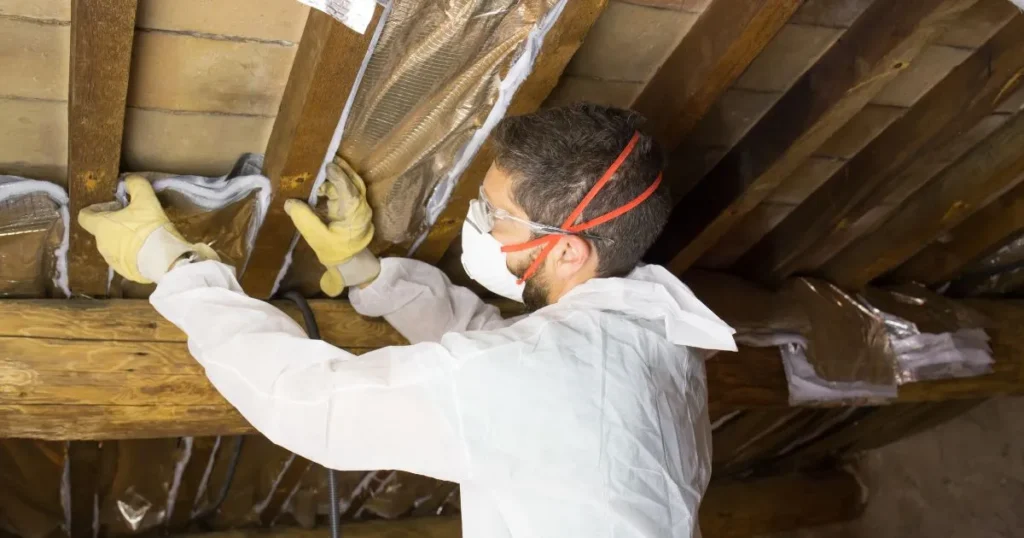
When removing attic insulation, it's crucial to consider potential wildlife intrusions. Rodents and other animals can compromise insulation, leading to inefficiency and health risks.
Critter Stop specializes in humane wildlife removal, ensuring that pests are dealt responsibly. This professional service helps to identify and eliminate any wildlife issues before proceeding with attic insulation removal and replacement.
By choosing Critter Stop, homeowners benefit from more than pest removal. They also gain access to quality insulation services. Proper insulation can greatly improve energy efficiency, lowering heating and cooling costs.
Here are key reasons to call Critter Stop at (214) 234-2616 for a free inspection:
Adequate insulation requires an animal-free environment. Homeowners can achieve optimal attic health and comfort by integrating Critter Stop's services.
Upgrading your home's insulation is crucial in improving energy efficiency, comfort, and overall property value. Before you embark on this journey, it's essential to understand the importance of attic insulation removal and the benefits it can bring. This FAQ section addresses homeowners' common questions about attic insulation removal and replacement, helping you make informed decisions for your home improvement projects.
Removing old insulation before installing new material ensures that your attic is free from contaminants like mold, dust, and pest droppings. This step also allows for a thorough inspection of your attic's structure, helping identify potential issues like leaks or damage that need to be addressed. Starting with a clean slate enhances the performance of your new insulation and contributes to a healthier indoor environment.
Look for companies with strong reputations, positive customer reviews, and proper licensing and insurance. A reliable service provider should offer a detailed plan, including removal, replacement, and cleanup, ensuring that your attic is in optimal condition. Asking for references and checking for certifications can also help you find a trustworthy service.
Many insulation removal services now offer eco-friendly options, such as recycling old insulation materials or using environmentally safe removal techniques. Check with local providers to see if they offer green solutions that align with your sustainability goals. Choosing eco-friendly services benefits the environment and can also improve the air quality in your home.
Quality insulation removal services should include thorough removal, safe disposal of old materials, and a complete area cleanup. Ensure the company uses the latest equipment and follows industry best practices. Additionally, look for companies that offer warranties or guarantees on their work, providing you with peace of mind.
Critter Stop offers professional and reliable attic insulation removal and replacement services in North Texas. We are committed to quality and customer satisfaction, and we ensure your attic is thoroughly cleaned and insulated to improve your home's energy efficiency and comfort.
An attic insulation removal vacuum can be effective for DIY projects, especially for small spaces or minor insulation removal tasks. However, these vacuums can be challenging to operate without experience, and improper use can lead to incomplete removal or damage to your attic. Hiring professionals is recommended for large-scale projects to ensure a thorough and safe job.
If you're considering DIY attic insulation removal, wear protective gear, gloves, goggles, and a mask. Seal off the work area to prevent dust and debris from spreading throughout your home. Use an insulation vacuum to remove the material carefully and ensure proper disposal according to local regulations. Always prioritize safety, and if in doubt, consult a professional.
The cost of removal and replacement can be higher than installing new insulation over old material, but it offers long-term benefits. Removal allows for a thorough inspection and ensures the new insulation performs at its best. Factors such as the size of the attic, the type of insulation, and the extent of the removal will affect the overall cost.
A professional service typically includes the complete removal of old insulation, safe disposal, cleaning of the attic space, and preparation for new insulation installation. It may also involve inspecting the attic for potential issues like mold or pest infestations. The goal is to leave your attic clean, safe, and ready for new insulation.
To find the best cost for attic insulation removal, compare quotes from multiple local providers. Look for companies that offer transparent pricing with no hidden fees. Critter Stop in North Texas offers competitive pricing and high-quality service, ensuring you get the best value for your investment.
Loft insulation removal is similar to attic insulation removal but may require different techniques due to the unique structure of loft spaces. Lofts often have limited access and ventilation, making professional removal essential to avoid damage and ensure safety. Both processes aim to prepare the space for new insulation but may vary in complexity and cost.
Factors such as the size of your attic, the type of insulation being removed, and the extent of contamination (like mold or pest droppings) will impact the cost. To save money, consider scheduling removal during the off-season or combining it with other home improvement projects to take advantage of package deals. Always request detailed quotes to understand what you're paying for.
Visit our Critter Library and learn more about our furry friends